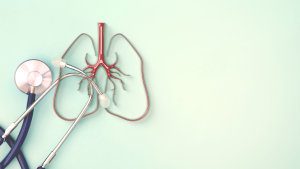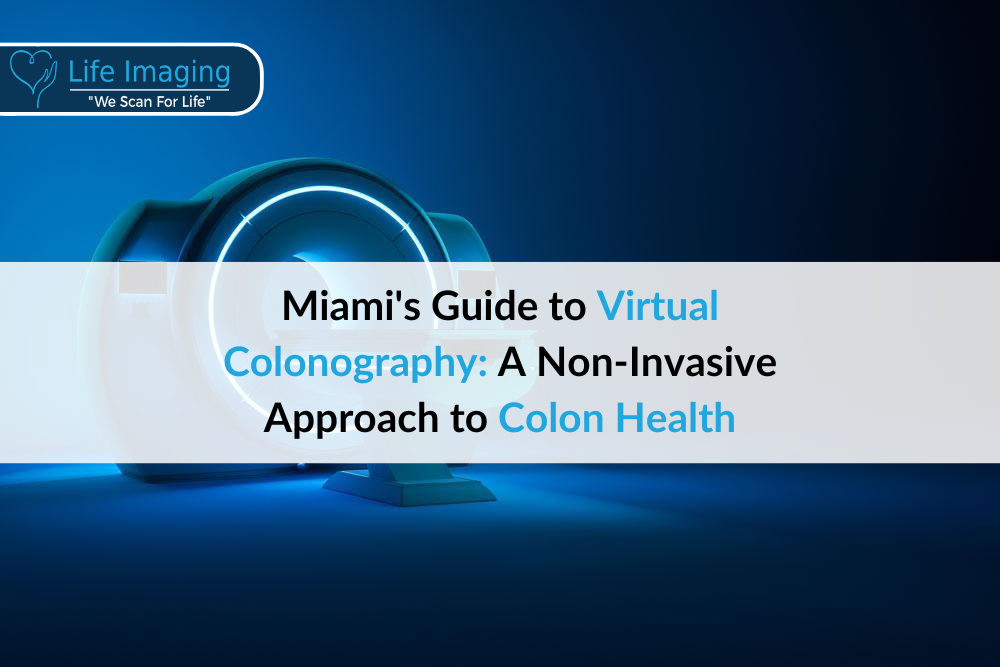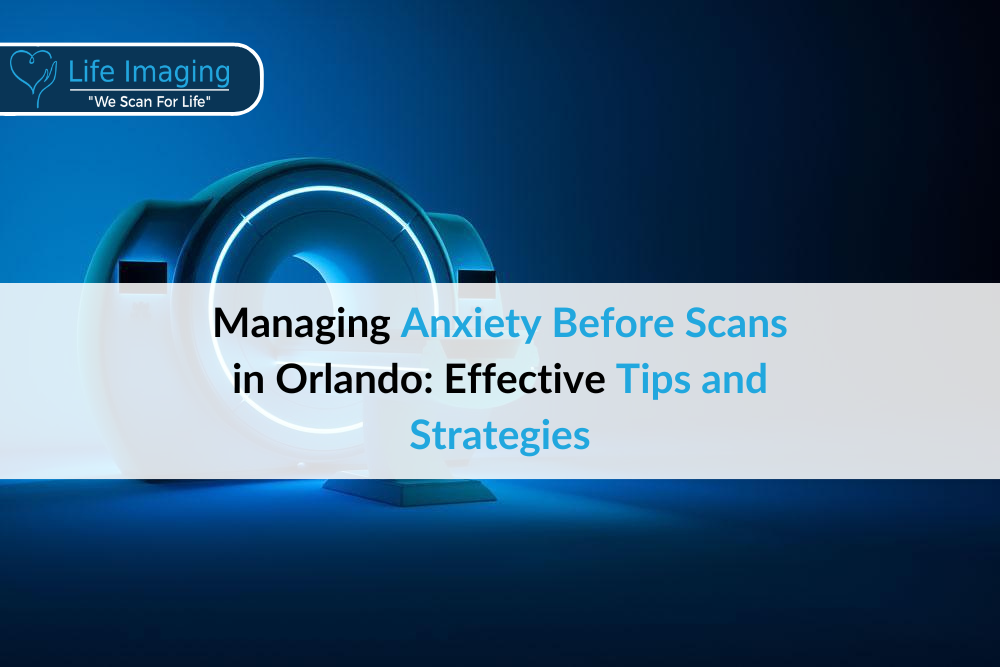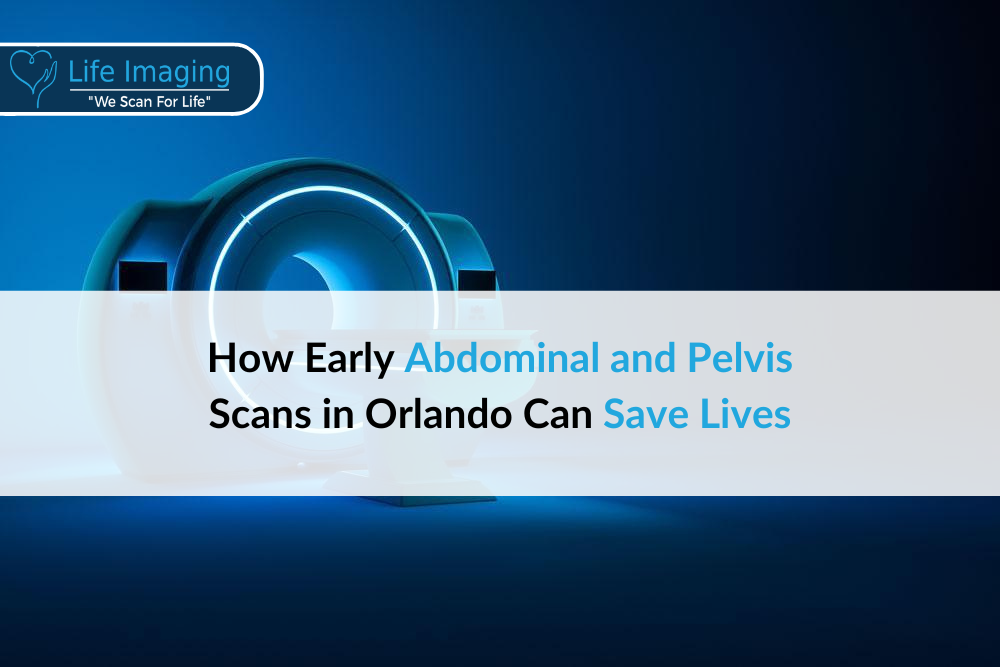
Steps to Take for Orlando Residents If Your Heart Scan Shows Abnormal Results
If you live in Orlando and recently had a heart
NOW OPEN! We’re excited to announce our new location in Jupiter, FL is now open! Learn more.

Lung cancer is one of the leading causes of cancer-related deaths worldwide. Despite advances in medical technology and treatment, early detection remains crucial in improving survival rates. Yearly lung screening exams play a pivotal role in identifying lung cancer at its earliest, most treatable stages. By catching abnormalities before symptoms appear, these screenings can drastically increase the chances of successful treatment and survival.
Life Imaging Fla is an imaging center dedicated to the early detection of heart disease and cancer. Utilizing state-of-the-art imaging technologies, they offer comprehensive lung screening exams designed to diagnose potential issues before they become life-threatening. This proactive approach aligns with the best practices in preventive medicine, emphasizing the importance of early detection and timely intervention.
In this article, we will explore the significance of yearly lung screening exams, how they work, who should get screened, and what to expect during the process. Understanding these aspects can empower you to take charge of your health and make informed decisions about annual screenings. Whether you are at high risk for lung cancer or simply proactive about your health, learning more about lung screening exams can provide peace of mind and potentially life-saving insights.

Early detection of lung cancer greatly increases the chances of successful treatment. The disease often shows no symptoms until it is in an advanced stage, making early intervention crucial. When lung cancer is detected early, treatments are more effective, and patients have a better prognosis. Yearly lung screenings can spot small nodules or irregularities that might be early signs of cancer, allowing doctors to take action before the disease spreads.
Annual lung screenings offer multiple benefits:
– Increased Survival Rates: Detecting lung cancer at an early stage can significantly improve survival rates.
– Better Treatment Options: Early-stage cancer is more treatable and may require less aggressive treatments.
– Peace of Mind: Regular screenings help provide reassurance, as they monitor lung health closely.
Low-Dose CT Scans
The most common tool for lung screenings is the low-dose computed tomography (CT) scan. This scan creates detailed images of the lungs using minimal radiation. It is highly effective in identifying small lung nodules that could be cancerous.
Here’s what to expect during a lung screening exam:
Low-dose CT scans are very accurate in detecting lung nodules. The amount of radiation used is much lower than a standard CT scan, making it safer for regular use. Despite the low radiation exposure, these scans provide high-quality images that help in early detection.
Who Should Get Screened?
Yearly lung screenings are particularly important for individuals at high risk of lung cancer. High-risk groups include:
– Smokers: People with a history of heavy smoking are at greater risk. This includes current smokers and those who have quit within the past 15 years.
– Age Factor: Individuals aged 55 to 80 who have a significant smoking history should consider yearly screenings.
– Exposure to Harmful Substances: Those exposed to asbestos, radon, or other carcinogens in the workplace or environment.
– Family History: People with a family history of lung cancer.
Even if you don’t fall into a high-risk category, talk to your doctor about the potential benefits of regular lung screenings. They can help you weigh the risks and benefits based on your personal health history and risk factors.
Making certain lifestyle changes can reduce the risk of developing lung cancer:
– Quit Smoking: The most effective way to reduce your risk is to quit smoking. Support programs and quitting aids are available to help.
– Avoid Secondhand Smoke: Stay away from environments where you might inhale secondhand smoke.
– Healthy Diet: Eating a diet rich in fruits and vegetables provides essential nutrients that help protect against cancer.
– Regular Exercise: Physical activity boosts overall health and can help keep your lungs healthy.
Minimize exposure to harmful substances to further protect your lung health:
– Test for Radon: Radon is a leading cause of lung cancer in non-smokers. Test your home and take steps to reduce radon levels if needed.
– Workplace Safety: Follow safety guidelines if you work in industries where exposure to harmful chemicals or asbestos is possible. Wear protective gear and ensure proper ventilation.
Lung nodules are small masses of tissue in the lungs. They are common and can be benign (non-cancerous) or malignant (cancerous). Most nodules are benign, but it’s important to monitor them.
During your yearly screening, doctors will look for new nodules or changes in existing nodules:
– Benign Nodules: Often caused by past infections or other non-cancerous conditions. These usually don’t require treatment but may need periodic monitoring.
– Suspicious Nodules: If a nodule appears suspicious, your doctor may recommend further tests, such as a biopsy, to determine if it is cancerous.
Regular follow-up care is crucial if nodules are detected. This ensures any changes are spotted early, and appropriate action is taken.
Benefits of Regular Monitoring
Regular lung screenings allow for early medical interventions. If a suspicious nodule or abnormality is detected, doctors can initiate treatment before cancer progresses. This early intervention significantly increases the chances of a positive outcome. Treatments executed at the initial stage are often less invasive and more effective, minimizing side effects and improving the patient’s quality of life.
Annual screenings provide a clear timeline of your lung health, making it easier to detect changes. By comparing yearly scans, doctors can assess whether a nodule is growing or changing. This careful monitoring helps to identify potential issues sooner, leading to prompt and appropriate responses.
For high-risk individuals, yearly lung screenings offer peace of mind. Knowing that any potential problems are being closely monitored can reduce anxiety and stress. This reassurance allows patients to focus more on preventive health measures and maintaining a healthy lifestyle.
Preparation for a Lung Screening Exam
Preparing for a lung screening exam is simple. You don’t need to follow any strict guidelines, but there are a few steps to ensure the process runs smoothly:
– Clothing: Wear comfortable clothes to the exam. You might need to change into a medical gown.
– Previous Scans: Bring any previous lung screening results for comparison.
– Medication: You can continue taking your usual medications unless instructed otherwise by your doctor.
The lung screening exam itself is painless and quick:
– Positioning: You will lie down on the scanning table, and a technician will position you comfortably.
– Instructions: The technician may ask you to hold your breath for a few seconds while the scan is being performed.
– Scan Time: The scan is quick, typically lasting around 10 minutes.
After the scan, you can resume normal activities immediately. There’s no downtime required. The results of the scan will be reviewed by a radiologist, who will look for any abnormalities.
What Happens If a Nodule Is Found?
If a nodule is found during your lung screening, the doctor will conduct an initial assessment. Small, non-suspicious nodules are often monitored over time with follow-up scans to ensure they don’t change.
If the nodule appears suspicious, further tests might be necessary to determine if it is cancerous. These tests could include:
– Biopsy: A small sample of tissue from the nodule is removed and examined under a microscope to check for cancer cells.
– PET Scans: Positron Emission Tomography scans help to determine if a nodule is cancerous by showing metabolic activity.
If a nodule is cancerous, several treatment options are available:
– Surgery: Removing the cancerous tissue surgically.
– Radiation Therapy: Using high-energy rays to kill cancer cells.
– Chemotherapy: Using drugs to kill or stop the growth of cancer cells.
The treatment plan will depend on the stage and type of lung cancer, as well as the patient’s overall health.
Myth 1: Lung Screening is Only for Smokers
While it’s true that smokers are at higher risk for lung cancer, others can benefit from lung screenings too. Non-smokers can develop lung cancer due to factors like air pollution, exposure to radon, or family history. If you’re at risk, regardless of smoking status, lung screening can be valuable.
Myth 2: Radiation Exposure is Dangerous
Modern lung screenings use low-dose CT scans, significantly reducing radiation exposure. The benefits of detecting lung cancer early far outweigh the minimal risks associated with these low-dose scans.
Myth 3: Lung Cancer is Always Advanced When Found
Annual screenings improve the odds of finding lung cancer in its early stages when it is most treatable. In many cases, lung cancer detected through routine screenings is early-stage, providing a greater chance for successful treatment.
Living a healthy lifestyle can help reduce the risk of lung cancer. Simple habits can have a meaningful impact on lung health:
– No Smoking: The most effective way to prevent lung cancer is not to smoke. If you do smoke, seek help to quit.
– Healthy Eating: A diet rich in fruits, vegetables, and whole grains can provide antioxidants and nutrients that protect against cancer.
– Regular Exercise: Physical activity keeps your lungs healthy and reduces cancer risk.

Protect your lungs by avoiding or limiting exposure to harmful substances:
– Radon Gas: Test your home for radon and take steps to lower levels if they are high.
– Occupational Hazards: Follow safety measures if you work with hazardous materials. Use protective equipment and ensure proper ventilation.
– Air Quality: Be mindful of air pollution levels and try to limit exposure on days when air quality is poor. Stay indoors and use air purifiers to keep indoor air clean.
A family history of lung cancer can increase your risk, even if you don’t smoke. If multiple family members have had lung cancer, talk to your doctor about regular screenings.
In some cases, genetic testing can reveal mutations associated with a higher risk of lung cancer. Knowing your genetic risk can help you make informed decisions about prevention and screening. Discuss the benefits and limitations of genetic testing with your healthcare provider to understand if it’s right for you.
Advancements in imaging technology have made lung screenings more accurate and reliable. Newer machines produce clearer images with lower doses of radiation. These improvements help doctors detect smaller nodules and abnormalities that could indicate early-stage lung cancer.
Artificial intelligence (AI) is making lung screenings more precise. AI algorithms can analyze CT scans quickly and identify patterns that may be overlooked by human eyes. This technology assists radiologists in making accurate diagnoses and ensures that no detail is missed.
Researchers are continually working on new technologies and methods to enhance lung screening processes. Future developments may include better image resolution, new biomarkers for early detection, and more efficient screening protocols. Staying informed about these advancements can help you take advantage of the best available screening options.
Facing the possibility of lung cancer can cause anxiety and stress. It’s important to understand these feelings and find ways to manage them. If you feel anxious about lung screening results or potential diagnoses, seek support from healthcare professionals, counselors, or support groups.
Connecting with others who are going through similar experiences can provide comfort and practical advice. Support groups, either online or in person, offer a safe space to share your concerns and learn from others. Friends and family can also be valuable sources of emotional support during this time.
Understanding the Screening Results
After a lung screening, the radiologist will review the images and prepare a report. The results can be categorized as normal, benign, or suspicious. A normal result means no nodules or abnormalities were found. If benign nodules are seen, they are typically non-cancerous and might be caused by past infections or inflammation. These nodules will need to be monitored but usually don’t require immediate treatment.
If the radiologist identifies suspicious nodules, further steps are required to determine whether the nodules are cancerous. This may involve more detailed imaging or procedures such as a biopsy. It’s important to follow your doctor’s recommendations closely.
Patients with benign nodules or other changes in their lungs may require follow-up scans. These scans help monitor any changes in size or appearance of the nodules. Regular follow-up ensures that any significant changes are detected early, allowing for prompt intervention.
Benefits of Lung Screening Beyond Cancer Detection
While the primary goal of lung screenings is to detect cancer early, these exams can also uncover other lung conditions. For example, issues like chronic obstructive pulmonary disease (COPD) and pulmonary fibrosis might be detected. Identifying these conditions early can lead to better management and treatment.
Lung screenings can provide a general assessment of lung health. This information is valuable, especially for high-risk individuals, because it helps in planning an overall health strategy. Doctors can use the screening results to recommend lifestyle changes, medications, or other interventions aimed at improving lung health.
Lung Screening and Smoking Cessation
For current smokers, undergoing regular lung screenings can be a catalyst for quitting. Seeing the direct impact of smoking on lung health can motivate individuals to seek help and take steps to quit smoking. Lung screening programs often provide resources and support for quitting smoking, including counseling and medications.
Many healthcare providers offer support programs designed to help individuals quit smoking. These programs typically include counseling, behavioral therapy, and medications like nicotine patches or gum. Continuous encouragement and follow-up can significantly increase the chances of successfully quitting smoking.
Public awareness about lung health and the benefits of yearly lung screenings can lead to earlier detection and better outcomes. Educational campaigns can inform people about the risks of lung cancer, the benefits of early detection, and the importance of quit-smoking programs. Increasing awareness encourages people to take proactive steps in maintaining their lung health.
Participating in workshops and seminars about lung health can provide valuable information. These events often feature healthcare professionals who share the latest research, preventive measures, and treatment options. Topics might include how to reduce exposure to harmful environmental factors and tips for maintaining healthy lungs through diet and exercise.
Cost can be a concern for many individuals considering yearly lung screenings. However, many insurance plans cover lung screenings for high-risk individuals. It’s essential to check with your insurance company to understand what is covered and any out-of-pocket costs that may apply.
Various organizations and healthcare providers offer low-cost or free lung screenings to eligible individuals. Community health centers and non-profit organizations sometimes host events where free screenings are provided. Being aware of these resources ensures that financial barriers do not prevent you from getting necessary screenings.
Accessibility to lung screening facilities is also crucial. Efforts are being made to bring screening services to underserved areas. Mobile screening units and partnerships with local clinics aim to improve access to essential health services for everyone, regardless of their location.
The thought of undergoing lung screening can be stressful. It’s normal to feel anxious about the possibility of discovering a serious health issue. However, preparing emotionally can help manage this anxiety. Talking to friends or family, practicing relaxation techniques, or consulting a counselor can provide emotional support.

Remember the benefits and potential lifesaving aspects of lung screenings. Focus on the positive outcomes of catching any issues early, which can drastically improve treatment success rates. Positive reinforcement helps to alleviate fear and encourages consistent participation in yearly screenings.
If you know someone who is at high risk for lung cancer, encourage them to get yearly lung screenings. Provide them with information about the benefits and help them overcome any fears or misconceptions they might have.
Offering to accompany them to their appointments can provide moral support. Being there for your loved ones can make the process less intimidating and show them that they are not alone in maintaining their health.
Being supportive and understanding is crucial. Keep encouraging positive thoughts and actions. Your support can make a significant difference in their willingness to undergo screening and take necessary health precautions.
The future of lung screenings looks promising with continuous advancements in technology. Researchers are exploring new methods of detecting lung abnormalities that could be more accurate and less invasive. For instance, blood tests and advanced imaging technologies are showing potential in the early detection of lung cancer.
Guidelines for lung screenings continue to evolve based on the latest research. These guidelines aim to maximize the benefits of screenings while minimizing risks. Staying informed about the latest recommendations helps ensure that individuals receive the best possible care.
The future may also see more personalized screening plans tailored to an individual’s specific risk factors. Advances in genetics and biomarkers may lead to screening programs that are more effective and efficient, focusing on those who would benefit the most. Personalized plans can lead to earlier detection and better outcomes, contributing to the overall fight against lung cancer.
Yearly lung screenings play a critical role in detecting lung cancer and other lung-related issues early, significantly improving treatment outcomes and survival rates. By understanding the benefits and process of lung screenings, individuals can take proactive steps toward maintaining their lung health. The importance of early detection can’t be overstated; it allows for timely medical interventions, monitors changes over time, and provides peace of mind.
Lung screenings are vital for high-risk individuals, including smokers, those with a family history of lung cancer, and people exposed to harmful substances. The advancements in screening technology and the support available for quitting smoking make taking charge of your lung health more accessible than ever. Educational efforts, coupled with support networks, enhance awareness and encourage more people to pursue regular screenings.
Don’t wait for symptoms to appear. Prioritize your lung health today by scheduling a yearly lung screening. Early detection saves lives, and being informed about your lung health could provide you and your loved ones with the peace of mind you deserve.
Take the first step toward proactive lung health management and book your screening with Life Imaging today. Our advanced imaging technology and expert team are here to help you stay ahead of lung cancer and other lung-related issues. Schedule your appointment now and invest in a healthier future.

If you live in Orlando and recently had a heart

Calcified lymph nodes are small, hard lumps that can develop

Low dose CT scanners are advanced tools that play a

Virtual colonography is an advanced way to check the health

Feeling anxious before a medical scan is common. Many people

Lung cancer is a serious disease that starts in the

* Get your free heart scan by confirming a few minimum requirements.
Our team will verify that you qualify before your scan is booked.
Copyright © 2025 Life Imaging – All Rights Reserved